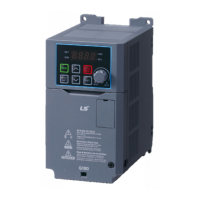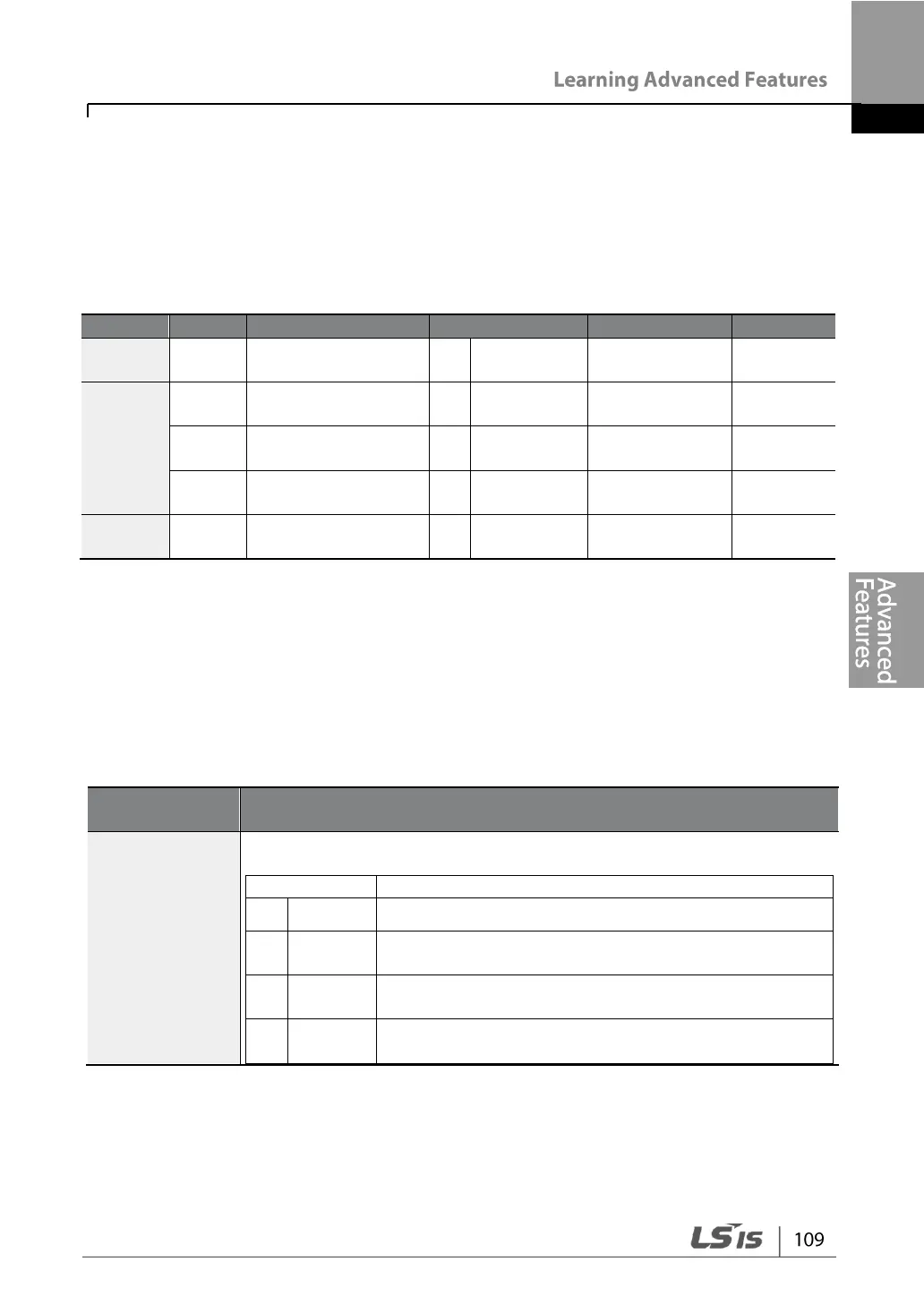5.1 Operating with Auxiliary References
Frequency references can be configured with various calculated conditions that use
the main and auxiliary frequency references simultaneously. The main frequency
reference is used as the operating frequency, while auxiliary references are used to
modify and fine-tune the main reference.
Frequency
reference source
Auxiliary reference
source
Auxiliary command
calculation type
Auxiliary frequency
reference gain
Px terminal setting
options
The table above lists the available calculated conditions for the main and auxiliary
frequency references. Refer to the table to see how the calculations apply to an
example where the Frq code has been set to 0 (Keypad-1), and the inverter is
operating at a main reference frequency of 30.00 Hz. Signals at -10 – +10 V are
received at terminal V1, with the reference gain set at 5%. In this example, the
resulting frequency reference is fine-tuned within the range of 27.00–33.00 Hz [Codes
In.01–16 must be set to the default values, and In.06 (V1 Polarity), set to 1 (Bipolar)].
Auxiliary Reference Setting Details
Set the input type to be used for the auxiliary frequency reference.
Auxiliary frequency reference is disabled.
Sets the V1 (voltage) terminal at the control terminal
block as the source of auxiliary frequency reference.
Select the volume dial of keypad as auxiliary
command.
Sets the I2 (current) terminal at the control terminal
block as the source of auxiliary frequency reference.

